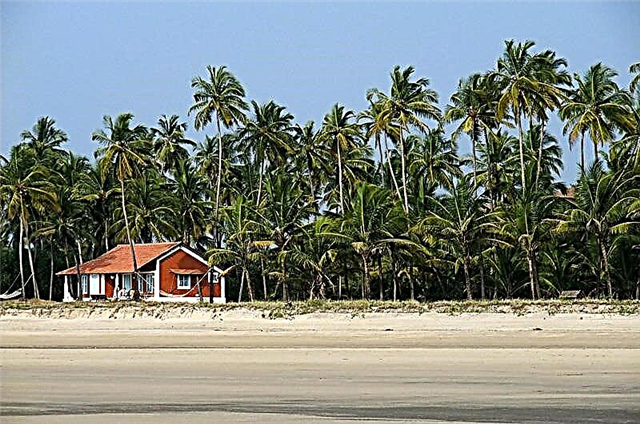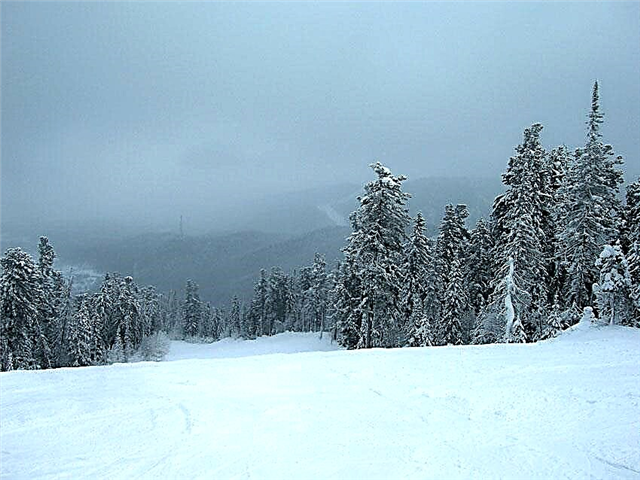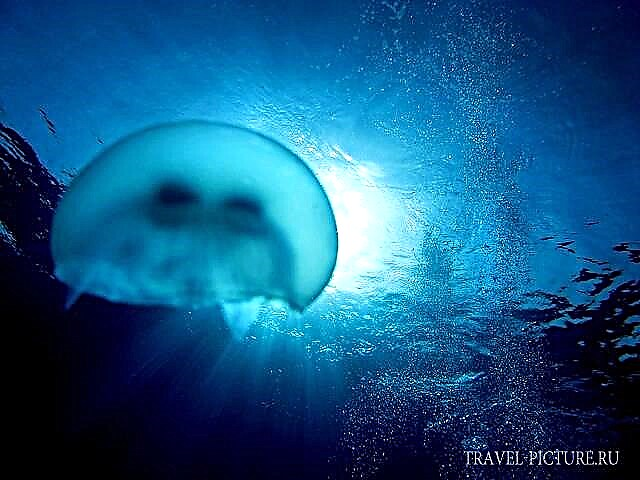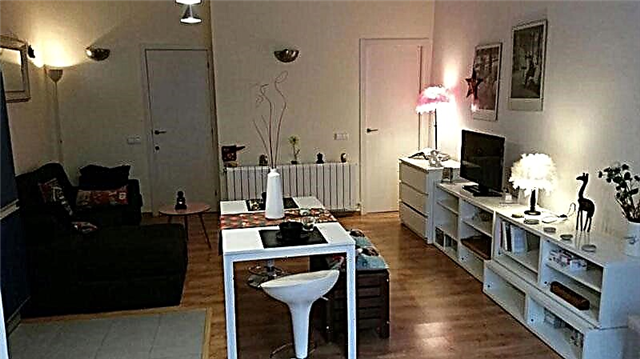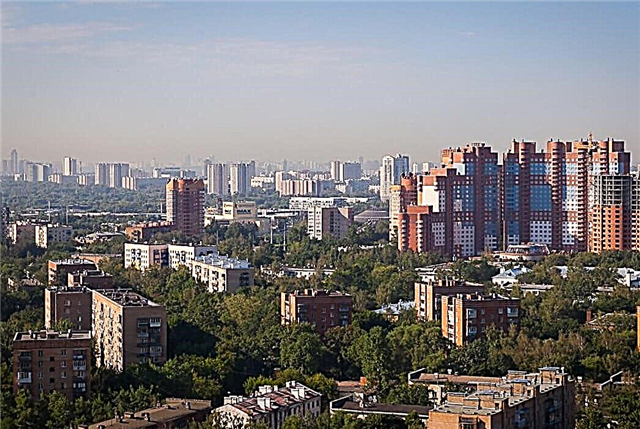The Moscow region differs from other constituent entities of the Russian Federation by its structure. For this reason, the city has a special status, and the Moscow region relies on internal reserves in tourism matters, and not on the Gold-domed one. Some of the nearly 80 cities have environmental concerns. At the same time, for such densely populated and built-up areas, the region looks rather green.
The cities of the Moscow region, for example, Kolomna, are famous for their architecture. In others, because of the consequences of the war or because of the recent foundation, such beauties cannot be found. As you travel around the area, you may discover unexpected leisure opportunities. So in Lytkarino there are trails for mountain bikes, and in Dolgoprudny there are several yacht clubs at once.
The largest cities in the Moscow region
List of the largest cities in terms of population in the region.
Balashikha
Belongs to the number of border zones - no longer a region, but not yet Moscow. The status of the city was received in 1939. The most interesting places in the area include the old estates of the Golitsyn and Gorenki. The cotton-spinning enterprise, which in the past played the role of a city-forming enterprise, is also noteworthy. On the walls of Soviet-era buildings, you can see mosaic figures of workers and athletes that have faded from time to time.
Population - 490 thousand people.

Podolsk
According to legend, the name of the city was due to a small incident: Catherine II wetted the hem of her dress here. The development of Podolsk was fruitfully influenced by the construction of the Warsaw highway. Manufactures and enterprises began to open, trade moved to a new level. The old estates Ivanovskoye and Pleshcheyevo, as well as several churches, including the Trinity Cathedral, give the industrial center a bit of charm.
Population - 304 thousand people.

Khimki
One of the largest satellite cities of the capital. Among the natural beauties, the Khimki forest stands out, for the preservation of which activists are fighting. The wooden church of the New Martyrs and the Confessors of Russia is also noteworthy. The temple was erected in the XXI century, but it seems to have descended from the pages of fairy tales or historical books. For sports fans, the city presented teams in different sports. Basketball Khimki has the most success.
Population - 254 thousand people.

Korolev
Space capital of the country. The largest science city in terms of the number of inhabitants. The city bears the name of the famous scientist and designer. In 1976, the first Youth Residential Complex in the USSR was built in Korolev. Its individual buildings were popularly called "books". The city has many space industry enterprises and tourist sites on this topic. For example, a sculptural composition in honor of the launch of the first satellite of the Earth.
Population - 224 thousand people.

Mytishchi
Located less than 20 km from the center of Moscow. There are several cultural objects of federal significance in the city. The car building plant and the pumping station are examples of industrial development of the century before last. The station was erected in 1911, and the Church of the Vladimir Icon of the Mother of God - in 1713. Among the monuments, tourists are especially fond of: a monument to a subway car, "Bayonet", a sculpture "A cat without a tail".
Population - 222 thousand people.

Lyubertsy
The first city in the region in terms of population density. The most famous enterprise is a helicopter plant. Industrial production fee - polluted air. Here Lyubertsy is among the leaders in the Moscow region. Significant objects of architecture: the Vvedenskaya church, built in the 17th century, the estates of Zenino and Bogorodskoye-Kraskovo. There are also the ruins of the Zenin aqueduct, left over from the last century.
Population - 207 thousand people.

Krasnogorsk
One of the youngest cities in the region appeared on the maps only in 1932. The proximity of the location in relation to the capital influenced its accelerated development. The Moscow Region Government House is a modern architectural landmark. The massive construction of glass and metal is just like futurism. The heritage of the past is represented by manors, as well as gardens and landscape parks attached to them.
Population - 171 thousand people.

Elektrostal
The name was received from the plant of the same name. There are many sports facilities in the city where domestic competitions are held. Elektrostal even hosted the Night Hockey League games. A landscape design competition is held in the summer. There are many monuments along the streets: a monument to the industrialist Nikolai Vtorov, who founded the city, a bust of the USSR hero Korneev, a monument to the liquidators of the consequences of the Chernobyl accident.
Population - 157 thousand people.

Kolomna
Old Russian architecture is the main component of the local tourism industry. Kolomna Kremlin is considered to be one of the main adornments of the Moscow region. Pilgrims in an endless stream flock to the Staro-Golutvin monastery, founded by Sergius of Radonezh. And the museum project "Artkommunalka" is made in the style of the middle of the last century and allows visitors to plunge into the life and work of artists.
Population - 141 thousand people.

Odintsovo
The name is assigned by the name of the boyar. The location on the Smolensky tract gave the city a number of development prospects. Now Odintsovo houses the best museum of armored vehicles and weapons in the country. Most tourists are attracted to the city by the Oceanarium "The Secret of the Ocean". Among its inhabitants are not only sharks, fish and turtles typical for aquariums, but also monkeys, foxes, and parrots.
Population - 137 thousand people.

Domodedovo
It occupies the top lines of the rating as cities of the region attractive for investment. Until 1897 it developed slowly. The laid railroad changed that. Now the main transport facility of the district is the airport of the same name. During your visit to Domodedovo, you should visit the recreational complex, the Konstantinovo estate with a preserved cascade of ponds and the Yolochki park.
Population - 133 thousand people.

Shchelkovo
In the 18th century, the territory of present-day Shchelkovo was owned by the Trinity-Sergius Lavra. Only the annexation of neighboring villages helped to grow to urban status. In 2001, the first mosque in the Moscow region was opened here. The city has a Museum of the uniform of the Russian, Soviet and foreign armies. It is difficult to find an analogue for him. Near Shchelkovo, it is worth visiting Bear Lakes and the Grebnevo estate.
Population - 124 thousand people.

Serpukhov
In the XIV century, a fortress appeared at the confluence of Serpeika and Nara. Modern Serpukhov grew out of it. The historical center of the city has been forming for several centuries. The buildings are built in different styles, which gives the architectural ensemble more expressiveness. Near the city there is the Prioksko-Terrasny Biosphere Reserve. Here, relict forests have been preserved, and there is a nursery where bison are bred.
Population - 124 thousand people.

Ramenskoe
The city was founded on the shore of the Borisoglebskoye lake. Now the reservoir is heavily polluted. In 1852, Princess Golitsyna initiated and sponsored the construction of the Trinity Cathedral, which has survived to this day. The attention of visitors is attracted by the city quarter, where multi-storey buildings are painted with scenes and children's cartoons. For active residents of Ramenskoye in 2008, a new Sports Palace was opened.
Population - 119 thousand people.

Orekhovo-Zuevo
Located on the coast of the Klyazma. The city can be called the birthplace of national football. The first match in the country was played here in 1888. The management of the Morozov factory, through sports, wanted to rid the workers of bad habits. Museum "Karbolit" was founded to educate the people and tell about the activities of the enterprise of the same name. Lakes Golden Sands, Amazonka, Isaakievskoe give everyone the opportunity to relax in the bosom of nature.
Population - 118 thousand people.

Dolgoprudny
The proximity to the capital makes the city attractive both for life and for tourist outings. The decoration of Dolgoprudny is the architectural ensembles of churches and estates. The location on the water created conditions for the opening of yacht clubs. Sailing in the area is popular and gaining momentum. Forests and parks are a guarantee of clean air, but there are environmental problems due to the Moscow Ring Road and production.
Population - 112 thousand people.

Zhukovsky
One of the science cities of the Moscow region. The name of the city was given in honor of the professor who stood at the origins of the Central Aerohydrodynamic Institute. The history of Soviet aviation was written here. During the Great Patriotic War, the local airfield was used for long-distance flights. In Zhukovsky there are all the enterprises necessary to create an airplane. The project begins in the design office, and ends at the test site.
Population - 107 thousand people.

Reutov
Despite the fact that the area is developing rapidly, residents of the Moscow region believe that it will soon be absorbed either immediately by Moscow, or by Balashikha. Several old reservoirs have dried up. The remaining Factory Pond and the Serebryanka River are closed for swimming. But on their coast you can sunbathe. In the XX century, Reutov became a science city. Entertainment buildings also appear: for example, the Youth Cultural and Leisure Center was built.
Population - 106 thousand people.

Pushkino
These lands in the past belonged to the ancestors of Pushkin. A boyar named Grigory had the nickname "Cannon", which soon became a surname. In the 19th century, the city was chosen by summer residents. Mayakovsky, Prishvin, Poor visited the city, which can be found in museums. During the Great Patriotic War, a special motorized rifle brigade was formed here for the first time. At the present time, Pushkino is a research center.
Population - 106 thousand people.

Sergiev Posad
The city is included in the tourist route "The Golden Ring of Russia". Its history is inextricably linked with Sergius of Radonezh - a saint especially revered by the Orthodox. It is important for pilgrims to plunge into the peaceful atmosphere here. Tourists visit the Trinity-Sergius Lavra and churches, as well as a natural attraction not typical of the middle lane - a waterfall. According to legend, Gremyachy appeared after the prayer of Radonezh.
Population - 100 335 people (2020).

See also: 45 main attractions of Sergiev Posad.
Noginsk
Stands on the banks of the Klyazma. During its existence since the end of the XIV century, it has changed many statuses and names. Noginsky has been named since 1930. The most beautiful place in the modern city is the square with a cascade of fountains. In the warm season, the backlight turns on at night. After marriage, couples in love must decorate the pedestrian bridge across the river with locks.
Population - 102 thousand people.

Voskresensk
Based on the banks of the Moskva River. Residential and industrial zones are "intermixed" with each other. In general, the city plan sometimes makes newcomers get lost. Walking along the pedestrian bridge over the river is a great leisure option. Excursion groups arriving in the city always go towards the estates. The writer Lazhechnikov was born and lived in Krivyakino. Gogol and Korovin visited Spasskoye at different times.
Population - 93 thousand people.

Lobnya
It formed into a single whole for a certain period from small villages and settlements. Military actions at the beginning of the Great Patriotic War led to the almost complete destruction of architectural monuments. Only a few objects have survived, such as the Church of the Savior Not Made by Hands and Shukhov's water tower. The seagull on the city coat of arms is no coincidence: birds live in a large colony on Lake Kiyovo.
Population - 89 thousand people.

Wedge
This city at different times was chosen for life by outstanding people of the country: Mendeleev, Blok, Gaidar, Tchaikovsky. The name of the latter is associated with the annual international festival held in Klin. Stars of classical music, ballet and opera come here to take part in the event. On the eve of the New Year holidays, there is usually a stir in the city: the local production of Christmas tree decorations is known throughout Russia.
Population - 79 thousand people.

Ivanteevka
Like many neighboring towns. Ivanteevka grew out of a small settlement with the development of industry. In museums and libraries, visitors are not allowed to forget about the outstanding people who come from the city. Among them is Ivan Gorbunov - the creator of the "red and freckled" Antoshka. Architectural objects are characterized by a difference in style, but they are harmoniously built into the overall ensemble, almost without getting out of the environment.
Population - 79 thousand people.

Dubna
On the site of the present city in the 30s of the XX century, a settlement for prisoners was founded. Objects older than this period are practically not found here. By the 50s, Dubna had turned into a center for research related to nuclear physics. There is a museum at the local institute. And in 2001 it received the status of a science city. Tourist sites: Volzhsky lighthouse and one of the highest monuments to Lenin on the planet.
Population - 75 thousand people.

Egorievsk
The name was given in honor of George the Victorious. The past of the city is closely connected with large fairs, as well as with the weaving industry. Urban development in general refers to architectural beauties. Some buildings have never really been restored, but managed to preserve their original appearance. The former Khludov factory and the History and Art Museum are important stops along the tourist route.
Population - 72 thousand people.

Chekhov
Named after the great Russian writer. The Melikhovo Memorial Museum-Reserve not only introduces the biography and legacy of the writer, but also hosts a number of events throughout the year. Among the 20 thousand items of storage there are paintings by famous masters, for example, Isaac Levitan. It is worth taking the time to explore the old estates. One of them was presented by Peter I to Fyodor Golovin at the turn of the 17th-18th centuries.
Population - 71 thousand people.

Vidnoe
It is recognized as the most comfortable city in the country with a population of less than 100 thousand people. The modern parks here are more like designer green projects in the open air. The house lights turn on at night. The general atmosphere is complemented by a monument of Russian classicism - the Sukhanovo estate and the Church of St. George the Victorious, founded in this century. Tourists do not bypass the "Winner" fountain.
Population - 71 thousand people.

Dmitrov
It was founded by Yuri Dolgoruky and is practically the same age as Moscow. Thanks to the renovations carried out, tourists gained access to the architectural gems of the area. These are the Kremlin, the Sretenskaya Church, and the Borisoglebsk Monastery. The buildings date back to the 15th century and later. At the Peremilovskaya height, where the battles took place during the Great Patriotic War, a monument was erected in memory of those events.
Population - 68 thousand people.

Stupino
The city began to develop from the moment an electric locomotive plant was opened here. At the moment, several more large enterprises are operating, which made Stupino an industrial center of the region. The main attractions are related to religious themes. Among them are Sergievskaya Church and Ivanovskiy Cathedral, as well as Trinity Belopesotskiy Monastery. Historical renovations are underway in their surroundings.
Population - 65 thousand people.

Pavlovsky Posad
One of the first associations with the city is the Pavlovo Posad printed shawls. The best examples are exhibited in the museum, where you can also learn about the history and peculiarities of production. Another tourist destination is associated with the Pokrovsko-Vasilievsky Monastery. During its reconstruction, already in the 21st century, the buildings were decorated with new frescoes, and particles of the relics of saints were brought from Athos and the Kiev-Pechersk Lavra.
Population - 63 thousand people.

Naro-Fominsk
People lived on this territory back in the XII century. Naro-Fominsk is ranked among the cities of military glory.Fierce battles took place here during the Great Patriotic War: the Red Army tried not to let the enemy approach Moscow. Monuments are the main urban feature. For example, "Three Tanks", captured German moose, "Black Tulip", Emelya on the stove. The sculptural composition "The Heart of Lovers" is a visiting card of the city.
Population - 62 thousand people.

Fryazino
The name suggests that the builders of the Moscow Kremlin lived here in the past. They were called fryaz in those days. The city is associated with the name of Anna Kaptsova, a patron of arts and the head of a merchant's house. For women at the turn of the 19th and 20th centuries, this was an almost unique achievement. Fryazino has grown to the status of a science city, thanks to the developed radio-electronic industry. Sightseeing - Victory Alley and Grebnevo estate.
Population - 59 thousand people.

Lytkarino
Stands on the banks of the Moskva River. After its founding in the 15th century, white stone was mined nearby. Quartz sand deposits are now being developed. There are also enterprises of the aviation industry. Lytkarinsky quarry is a great place for beach and outdoor activities. There are several trails of varying difficulty for mountain bike lovers. The main architectural and historical value is the Lytkarino estate.
Population - 58 thousand people.



